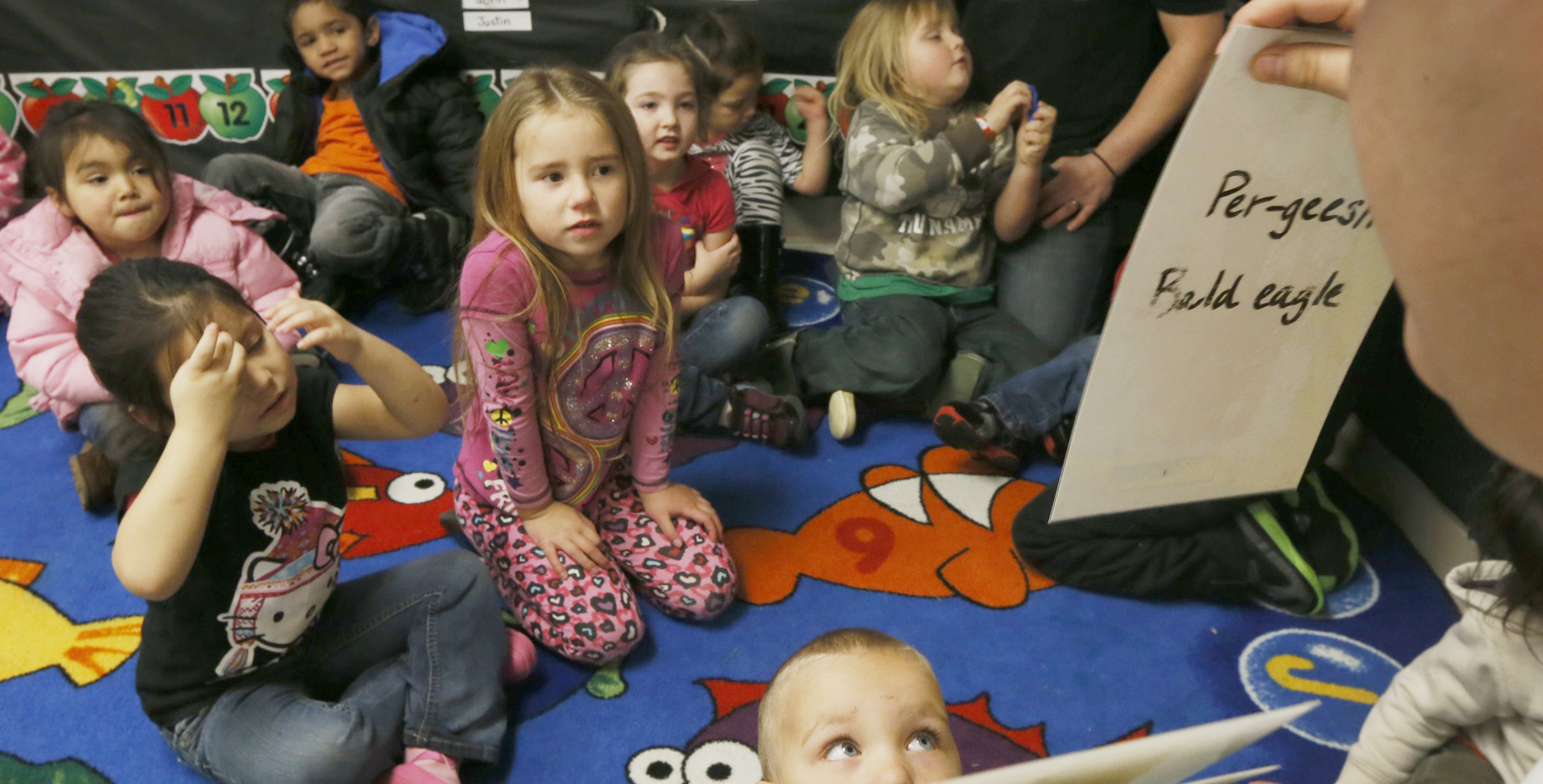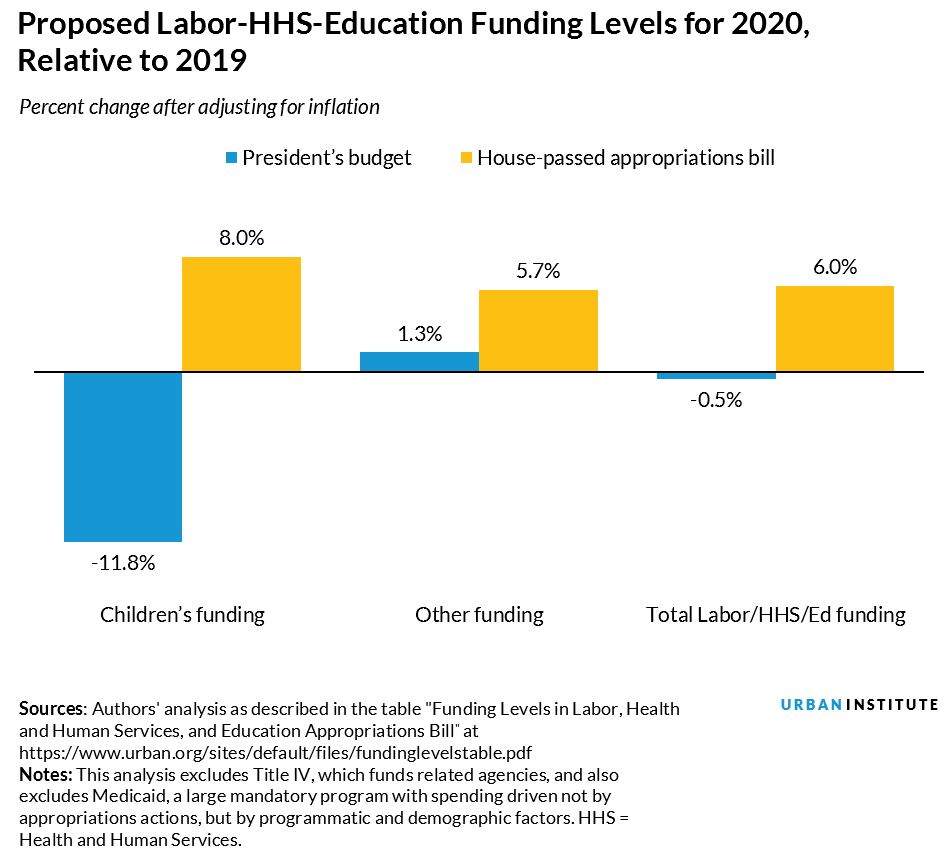
As Congress returns from recess this week, the Senate faces a busy schedule of marking up appropriations bills, setting funding for the next fiscal year.
Funding levels for important programs supporting our nation’s children will be decided in the Labor and Health and Human Services (HHS) and Education bill, which the Senate is scheduled to mark up tomorrow. The bill funds Head Start, child care, Education for the Disadvantaged (Title I), Special Education, and many other programs benefiting children.
On the eve of Senate action, it is useful to reflect on the funding provided in the House version of the Labor-HHS-Education bill, passed as part of a package of funding bills on June 19, 2019, and the funding levels recommended in the president’s budget request for fiscal year 2020.
Comparing the House bill with the president’s budget
The House bill would provide an 8 percent increase in children’s programs funded through the fiscal year 2020 Labor-HHS-Education bill. This increase is higher than the 6 percent increase in overall funding levels in the bill. (Increases and decreases are measured relative to 2019 levels, adjusted for inflation.)
In contrast, the president’s budget proposed a 12 percent decrease in children’s programs covered by the fiscal year 2020 Labor-HHS-Education bill (see figure below), while proposing a slight (one-half percent) decrease for Labor/HHS/Education programs overall. That is, cuts in the president’s budget specifically affect programs benefitting children, while increases in the House bill benefit such programs.

A review of specific programs, as shown in this table (PDF), highlights differences between the House funding bill and the president’s budget request:
- The House funds the Child Care and Development Fund at $7.7 billion, a 46 percent increase over 2019 levels, and increases Head Start funding at $11.6 billion, a 13 percent increase. In contrast, the president’s budget proposes flat funding—or a 2 percent cut after adjusting for inflation—for these early education and care programs.
- The House also proposes a 36 percent increase in spending for Unaccompanied Alien Children, a program which helps house and care for children in immigration custody. The president’s budget proposes flat funding, or a 2 percent cut in real terms.
- The president’s budget would eliminate 21st Century Learning Centers, which fund after-school and summer learning programs, as part of a dramatic (87 percent) reduction in School Improvement programs. The House would maintain and increase funding for 21st Century Community Learning Centers, with an overall increase in School Improvement programs of 16 percent.
Where will Congress land on funding levels for children?
The budget deal agreed to in late July provides less money for nondefense discretionary programs than was assumed by the House when it acted in June. As a result, Senate proposals for funding Labor-HHS-Education programs are likely to reflect the lower overall agreed-to limits.
As Congress moves forward, with Senate and conference actions, it is an open question whether the final Labor-HHS-Education appropriations bill will disproportionately reduce children’s programs, as in the president’s proposed budget. Instead, Congress could choose to follow the House in increasing funding for early care and education and other critical children’s programs as it weighs the trade-offs of various budget priorities.
Appropriations bills are one way policymakers can set priorities. For years, researchers at the Urban Institute have been tracking federal spending on children, with a set of annual Kids’ Share chartbooks examining spending on children under current law.
The analysis described in this blog post marks the first time we’ve applied a children’s lens to appropriations bills as they move through Congress, before they become law. We do so to help draw attention to how Congress’s actions can affect the level and composition of public resources invested in children.
As the House and Senate mark up, pass, and move to conference on the Labor-HHS-Education bill, will they increase or decrease funding for children, and will these changes be disproportionate to overall changes? Our public investments, made in conjunction with family and other private investments in children, will have far-reaching consequences for building the capacity of tomorrow’s workforce and economy.
Tune in and subscribe today.
The Urban Institute podcast, Evidence in Action, inspires changemakers to lead with evidence and act with equity. Cohosted by Urban President Sarah Rosen Wartell and Executive Vice President Kimberlyn Leary, every episode features in-depth discussions with experts and leaders on topics ranging from how to advance equity, to designing innovative solutions that achieve community impact, to what it means to practice evidence-based leadership.